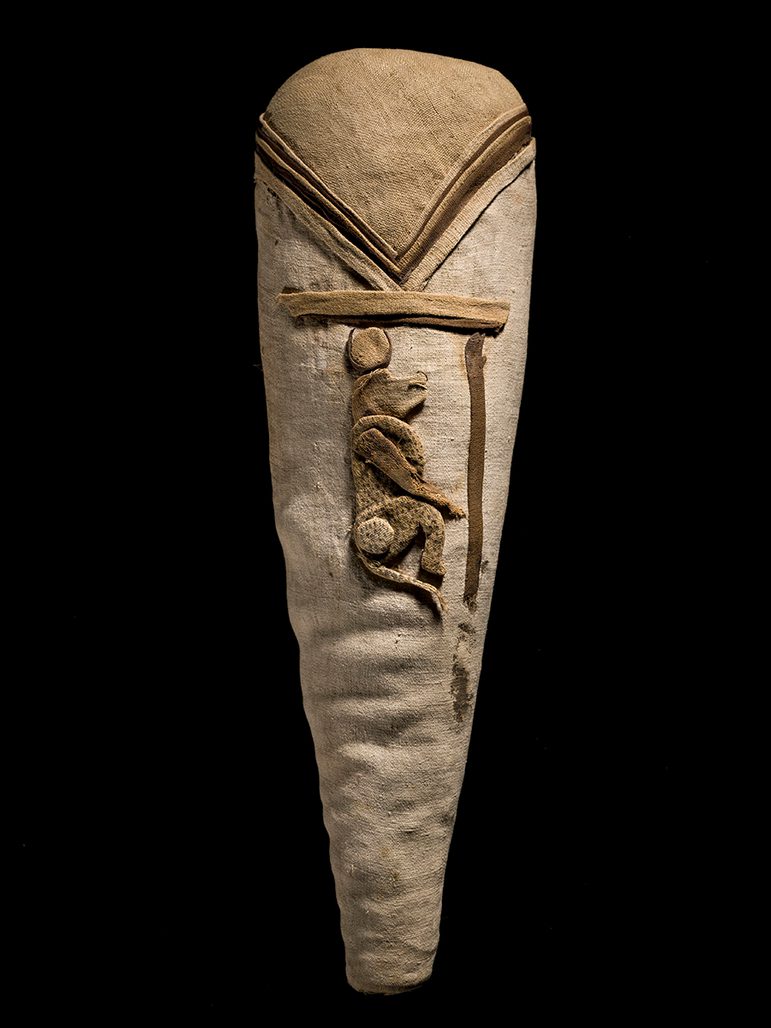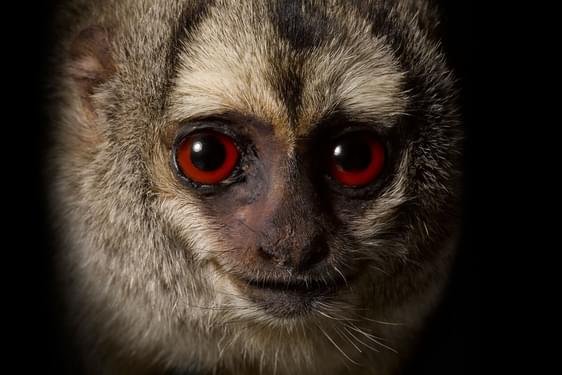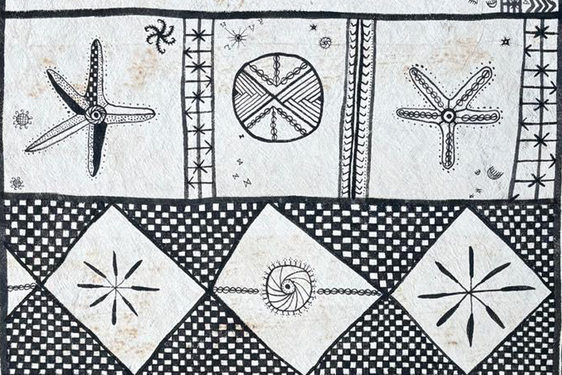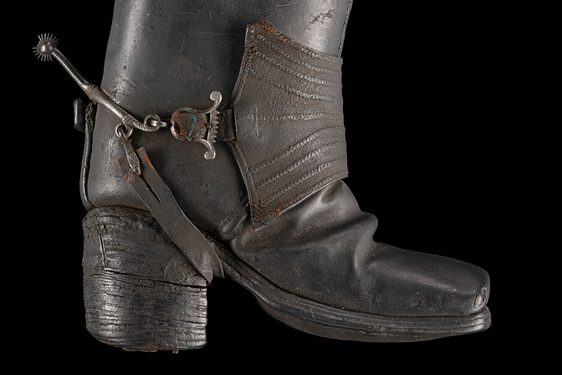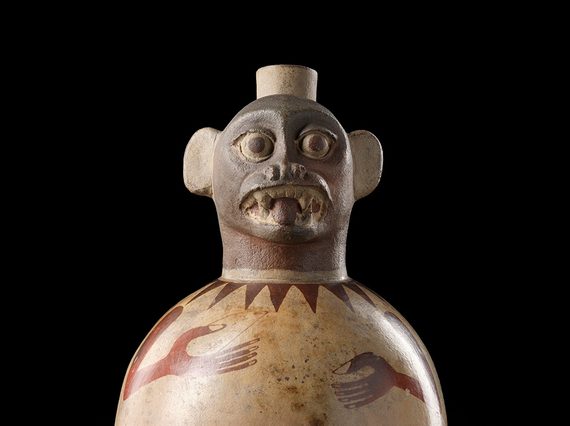
The cultural symbolism of monkeys and apes in 6 objects
News Story
Apes and monkeys are the closest relatives to humans. Our primate cousins have always held special significance for the cultures mostly directly in contact with them.
This selection of objects from our collections exemplifies the powerful symbolism that monkeys and apes have held in the Americas and Africa for thousands of years up to today. Some of these objects represent monkeys and apes as spiritual beings, adorning items used in rituals or as offerings in burials and temples. But they also demonstrate recognition of the wild and playful aspects of primate behaviours.
1. Howler monkeys
This Maya vessel (c. 400-600 AD) from Peten in Guatemala depicts a black howler monkey. It's poised on the lid with his tail curving to form a handle. The Mayas worshipped a god in the form of a howler monkey who represented a deity of the arts. It was a patron of scribes, sculptors and artists. The lid is carved with imagery of the ‘Flower Mountain’. This is an animate mountain cave which is home to the gods and ancestors. The serpent represents the air or breath coming out of the caves in the mountain.
Howler monkeys are seen as spiritually significant. They feature in Maya mythological creation stories that explain the origin of the world. Monkeys represented failed attempts by the gods to craft humans. Their cosmological importance means that many surviving images of howler monkeys are found in burial sites. Their image has been found on bowls and vases contained in burial sites and tombs. These vessels were often made to hold something valuable and specific such as cacao and tobacco. They would also contain offerings such as animal remains or bones.

2. A smoking monkey
Contemporary Mayan artist Patricia Martín Morales was inspired by a vessel known as ‘The Smoking Monkey vase’. This is from the same archaeological region as the above howler monkey vessel, though stylistically very different. Morales’ vessel depicts a procession of animals and spiritual beings. These figures are enjoying the intoxicating effects of cacao and tobacco. The vessel also features an inscription of lively glyphs painted above.
Four figures in a procession wear red scarves, indicating that they are ‘wayes’, spirit guides in Xibalba, the Mayan underworld. One of them is a monkey smoking a thin cigarette, whilst holding a large cocoa pod. Mayan art often depicts gods and nobility smoking tobacco and drinking a strong and savoury cacao drink. This is made from fermented cocoa pods, the precursor to our contemporary hot chocolate.
Two types of monkey inhabit the Central American jungle. In Mayan art the larger howler monkey is associated with duty and responsibility. The smaller, more lively spider monkey is associated with fertility, intelligence and mischief. Monkeys are also associated with the underworld, operating outside the usual codes of accepted behaviour.

3. An unruly monkey
This vessel was made in a mould, with the spout and slip-painted decoration added by hand. The monkey has bared teeth and a projecting tongue, either in aggression or play, possibly to symbolically ward off evil. Monkeys were associated with the underworld and unruly behaviour outside of the norm. As such, they often decorated ritual objects used by priests and shamans.
Large numbers of ceramics survive from the pre-Incan Moche culture, depicting a wide variety of subjects and scenes. These include animals, plants, warriors, rulers, deities, sacrificial ceremonies, and hunting scenes.
Generally found in graves, there is also evidence they were often used before being buried. Stirrup-spout vessels are very characteristic of Moche ceramics. The spouts minimise evaporation of precious liquids inside. They also allow easy pouring and carrying.
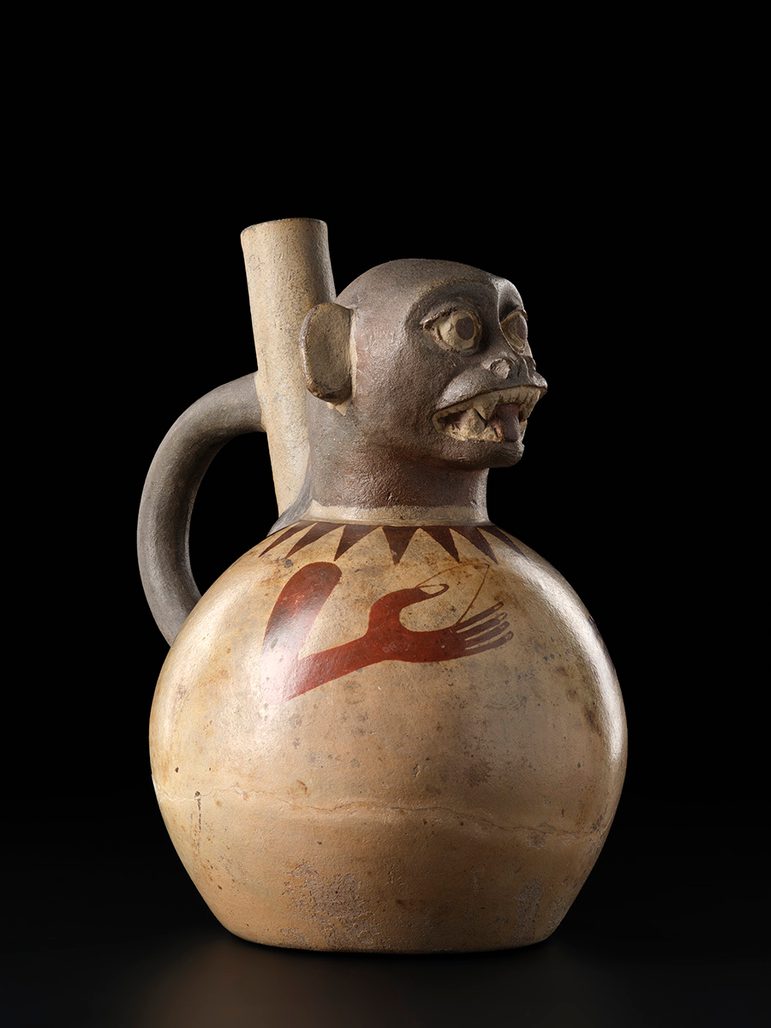
4. Chimpanzee King of the Night?
The elaborate brass vessel shown here may have been commissioned by a Fon, or ‘King’, in Western Cameroon. It may have served as a ceremonial cup for pouring offerings to ancestor spirits. The precise significance of the chimpanzee figures attached to the mid-section of the vessel is not known. However, the chimpanzees might signify the ambiguous nature of royal authority. Fons were thought to exercise similar powers to witches and maskers. It was believed that they had the ability to transform themselves into the shapes of wild animals to roam their realms at night.
The vessel was made by metalsmiths from the Bamum Kingdom, who were renowned for their brass casting skills. Complex trade relationships in Western Cameroon encouraged craftspeople to develop regional specialisms. Many of these independent kingdoms still retain the prestigious Kwifon association which advises and supports the Fon and helps to balance his power. The association uses the powerful Mabu masker to summon offenders to trial and to punish convicted criminals. The headpiece of the Mabu masker is often carved like the head of a chimpanzee, a powerful wild animal that is ambiguous in also seeming human-like.
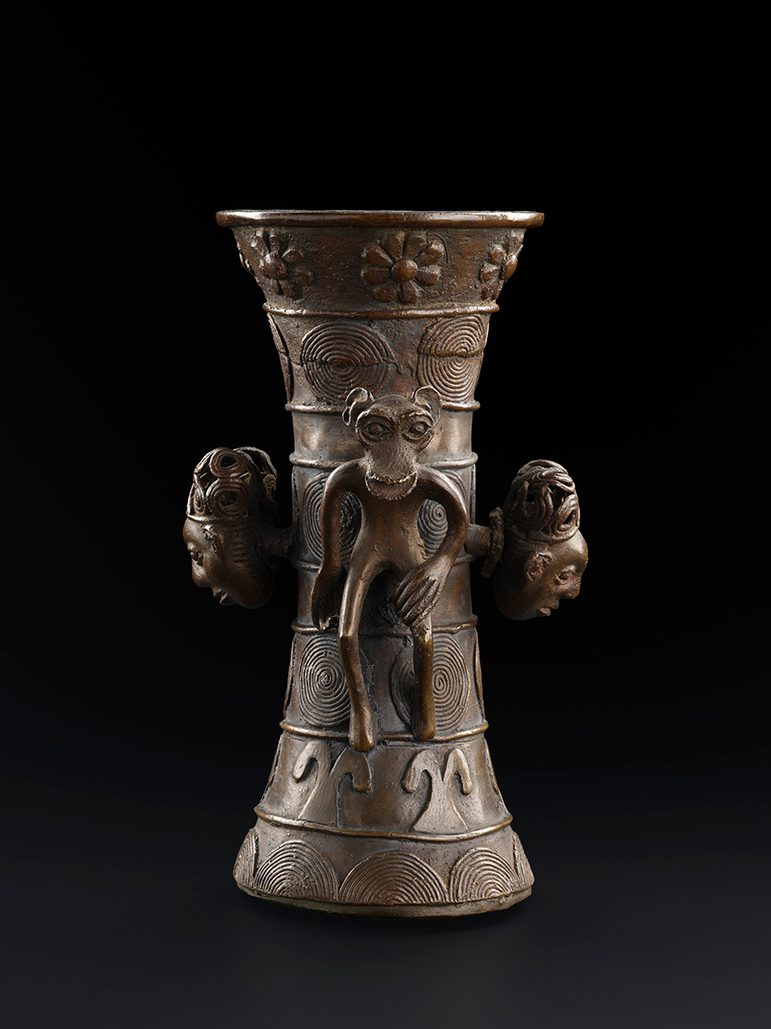
5. An ancient Egyptian doodle
Flakes of limestone and pieces of broken pots were often used as the ancient Egyptian equivalent of scrap paper. Usually, small enough to fit in your hand, these fragments had notes, lists and other things written on them. They were used by artists to practice or simply doodle. This ostracon shows a sketch, in black and red ink, of two boys chasing a monkey up a tree.
The boys might be chasing the monkey away from the fruit on the tree, but the way they are drawn hints at something more. The boy in the middle stands with one arm raised high in the air as he steps forward to attack the monkey. This stance, and the calm demeanor of his friend behind him, recall massive images cut into the sides of temples. They are reminiscent of images that show the king attacking his enemies. This would fit into the world of other doodles that playfully show animals doing human activities like a cat farming ducks or a mouse playing the harp.
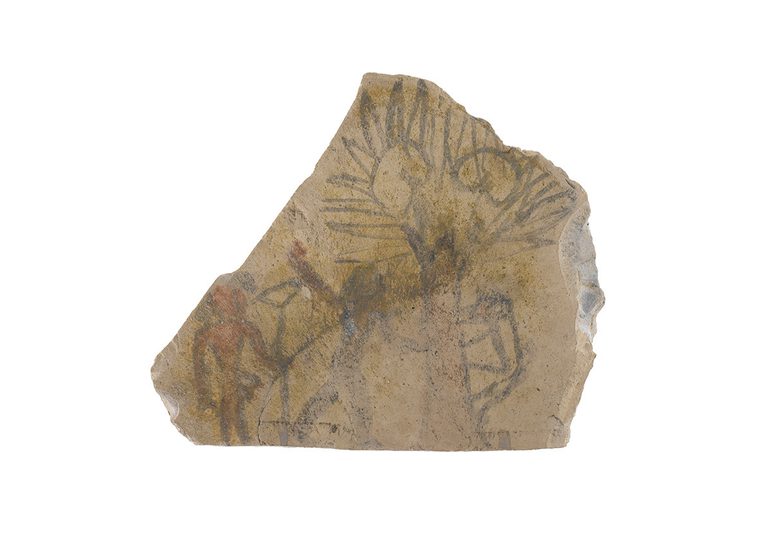
6. A wise baboon
Ancient Egyptian gods were often associated with certain animals. These were reflective of their character and particular powers. This image of a baboon wearing a crescent moon on his head represents Thoth. Thoth, the god of writing, wisdom, and the moon was associated with both hamadryas baboons and ibis birds. When acting as the scribe of the gods, Thoth was depicted as an ibis-headed man holding a writing palette.
During the Late Period and Greco-Roman Period in Egypt (c.450 BC–AD 300), it became common practice to mummify animals and offer them as gifts to the gods. It is evident that some animals were farmed for this purpose by temples. Millions of mummified ibises were buried in catacombs dedicated to Thoth. Mummified baboons have also been found here in much lower numbers. Hamadryas baboons are not native to Egypt, so they had to be imported from the southern Red Sea region. As such, they may have been seen as a more valuable gift to Thoth. The linen wrapping of this mummified animal is decorated with an image of a baboon, but scanning has revealed that it actually contains an ibis.
